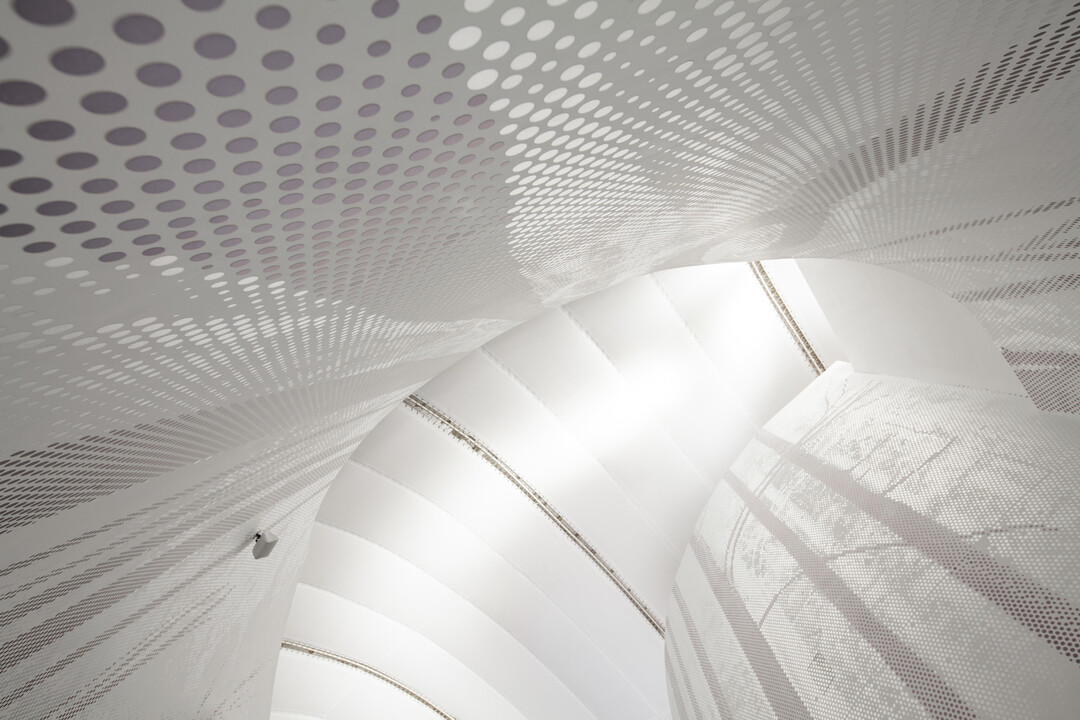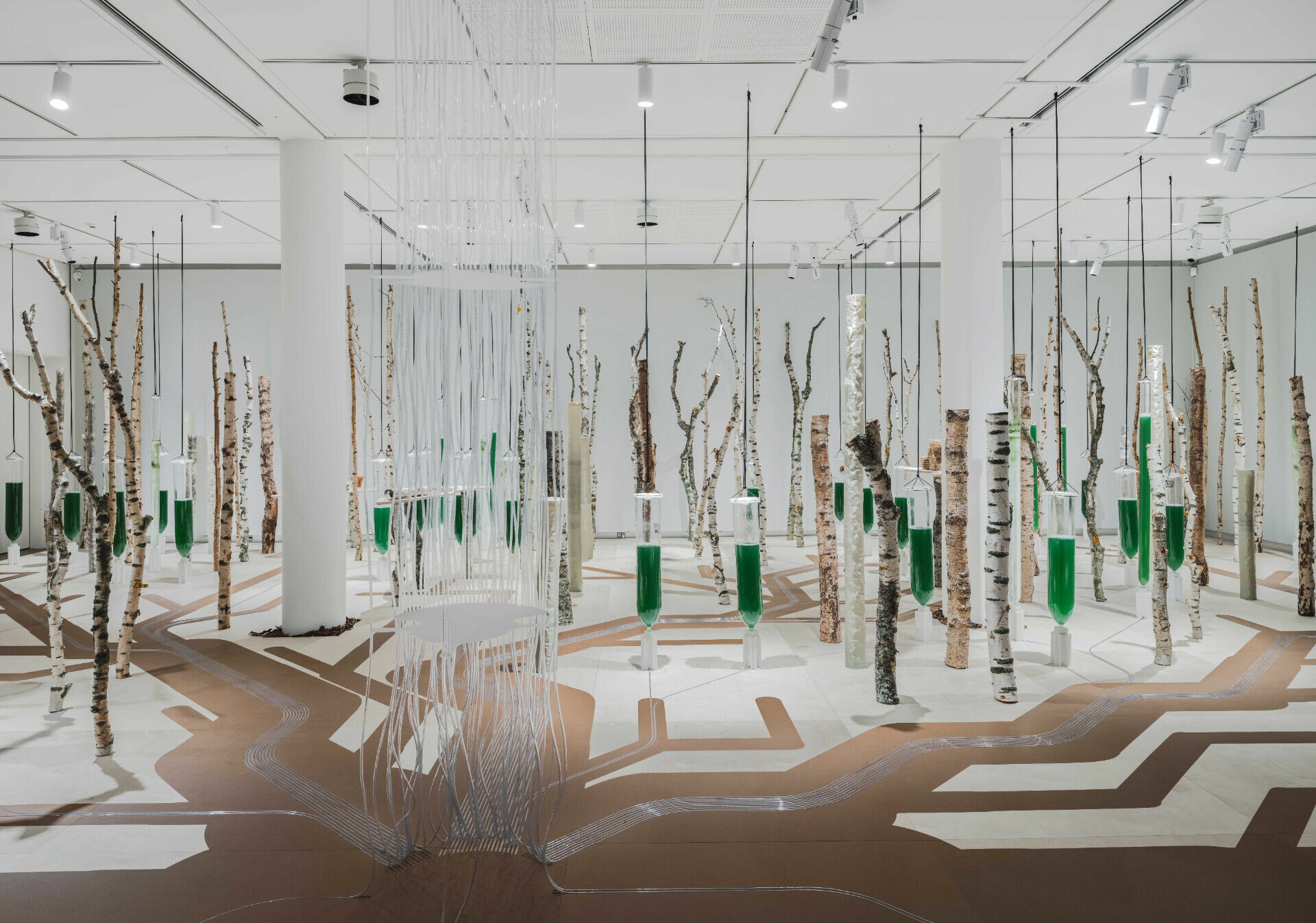
Members Only
加入會員後,點選Members Only即能閱讀更多完整文章及獨家內容。

生命結構(建築串聯系列的一部分)
由 ecoLogicStudio 創始人、建築與設計創新專家 Claudia Pasquero 教授及 Marco Poletto 博士,攜手學術合作夥伴因斯布魯克大學,共同打造的最新裝置作品「深林探微」(Deep Forest),亮相於丹麥路易斯安那現代藝術博物館舉辦的 「生命結構」(Living Structures)展覽。該展覽於 2024 年 11 月 8 日開幕,將持續至 2025 年 3 月 23 日。
Deep Forest 是路易斯安那博物館(Louisiana Museum of Modern Art)於 2023 年委託設計的裝置作品,旨在重新審視建築與科技的自然化過程,並逆轉現代主義機械化自然的項目方向。作為博物館 “建築串聯”(Architecture Connecting) 系列的一部分,展覽「生命結構」(Living Structures)由策展人 梅特·瑪麗·卡勒豪格(Mette Marie Kallehauge )和凱爾德·凱爾德森(Kjeld Kjeldsen )策劃,探討氣候危機時代中建築在社會、文化及政治層面的演變。
「走進一片森林,就像深入其交錯的生態系統中,暫時忘卻自我,沉浸於彼此聯繫的多重過程中。在當代世界中,這些過程既是生物性的,也是數字位化的,我們與森林共同構成了‘菌絲體有機網絡’;就像深森林展覽入口處迎接參觀者的菌一樣,它既是生物學和數學的理論和知識,有助於開發與人類和自然互動的新數位工具、材料和建築結構。」 —— ecoLogicStudio 聯合創始人 Claudia Pasquero 教授如此表示。
這項作品的複雜性和相互關聯性只有透過體驗才能真正理解,Living Structures運用沉浸式空間設計語言,表達 ecoLogicStudio 及其學術合作夥伴在生物數字化設計領域二十年的研究成果。
展覽Living Structures的靈感來自路易斯安那博物館的特殊地理環境,以當地可採集與製造的材料為基礎,核心則是森林的“木網絡”——菌絲體(mycelium)。菌絲體在展覽中不僅組織了展品的平面結構、光合作用反應器的通風系統及參觀路線,還作為“活的建築材料”,塑造了生物降解柱的形態與實質。
雖然菌絲體在生物設計中的應用沒有限制,但Deep Forest聚焦菌絲體與微藻的共生關係。菌絲體作為“森林的網絡”,與光合作用微藻結合,形成共生地衣(lichen),支持這個互聯生態系統的運作。
Living Structures由回收102 個樺樹幹製成的碳儲存器,在展覽中容納了大量的真菌物種,並為空氣淨化與碳封存提供了44組光合作用裝置,每天可從大氣中捕捉600克的二氧化碳,相當於一片小型成熟森林的吸碳能力。
這些裝置由 ecoLogicStudio 設計與工程製作,其中,分為15組含當地海岸巨藻的高單位及 29組較低的單位則含有螺旋藻 SP的微藻品種小球藻,為空間注入新鮮氧氣。
它們因斯布魯克大學合成景觀實驗室創建 3D 列印 20 個生物降解器提供生物質。Living Structures 的外部結構是注入藻類的生物聚合物 3D 列印的,創新製造技術與生物降解結構由含藻類的生物聚合物外殼與 300 公斤咖啡渣填充物組成,並接種活性菌絲體。這些菌絲體柱在地下培育三週後取出,乾燥形成具有結構性與美感的建築材料,局部區域保留濕潤以促進新鮮蘑菇會從 3D 列印樹皮的縫隙中生長出來。Deep Forest 以建築形式呈現光合作用的循環過程,實現從城市污染物中“生長”可持續建築的夢想。這項作品不僅是建築創新,更是對當前生態問題的深刻回應,象徵自然與科技在未來建築中的共生。
“光合作用是火的逆向過程。當世界有太多的火時,我們需要更多的光合作用,而且需要設計它,定製它。”— 引用Mario Carpo教授為展覽目錄錄製的 Claudia Pasquero教授和Marco Poletto博士的採訪